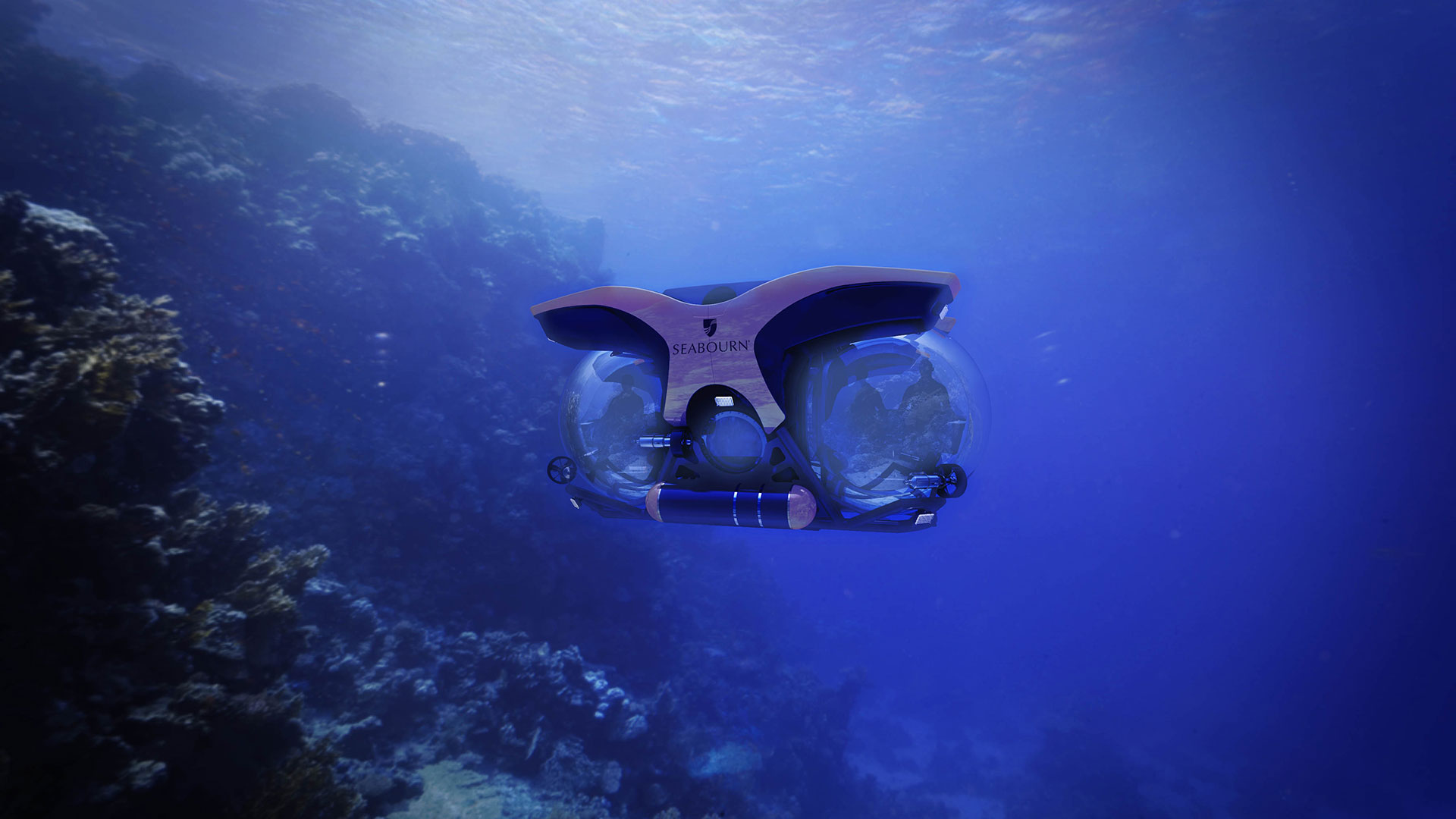A day at sea has the potential to be one of the duller sections of a long expedition voyage. The side gates are stowed, the zodiacs strapped down and the coffee tends to flow. Lectures are attended and much fabulous knowledge imparted but in between our minds can wander. For those keeping a weather eye on the horizon there may be a thing or two to make them stand and raise a pair of binoculars to their eyes. Perhaps a migratory sea bird soars on locked wings, riding the air pockets above the waves. Perhaps a lonely boat is tossed on a choppy sea. Perhaps an intrepid whale takes their necessary breaths of air on their long trek through the deep oceans.
 |
| Seabourn is one of several expedition cruise lines employing submarines (supplied) |
As we travel over the surface of the waves, we interact with an incredibly small section of our vast ocean. But when we begin to think on what we may be missing, hidden beneath the crystal violet waves, a whole new world lights up.
The definition of the “deep sea” is often boxed as everything the light doesn’t touch. This fails to account for the diversity of habitats that can be found below the photic zone. The abyssal plains are where whale carcasses deteriorate, snacked on by a vast range of species, sinking nutrients into the cold depths for later upwellings. Here vast mineral mosaics provide habitat for a variety of deep sea sessile organisms to thrive. The diversity here however is dwarfed by that which clings to seamounts, underwater mountains that rise through volcanic activity. These structures facilitate disruptions to the flow of currents, pulling those deep, nutrient rich waters towards the sunlight where phytoplankton can finally make use of it. Where there is phytoplankton there is life, creating hotspots of biodiversity within the wet surrounding desert.

Critically endangered Bryde’s whale feeding on fish. Rafael Fernández Caballero [source]
The deep sea trenches are so remote and so incredibly difficult to explore that we only have tiny pinpricks of data from within them. It is difficult to even say how much we do not know. Primarily through baited remote underwater cameras dropped in to collect what little they can we have gleaned tiny morsels of knowledge, like dropping a bucket into an undiscovered rainforest from a great height, collecting a bit of soil and some organic specimens, winching it up and inferring the rest from there. Here we found the deepest known vertebrate, a diminutive animal known as a snailfish. Next to nothing is known about them as the adaptations they have to the unbelievable pressure at those depths mean they turn to mush when they are brought up for scientific examination.
 |
| Packed auditorium aboard Seabourn Pursuit (RE) |
We have, through dedication, made incredible discoveries about this uniquely inaccessible portion of our world. Hydrothermal vents are a relatively recent find. In 1977 an exploration of the oceanic ridge near the Galapagos happened upon them, covered in unique species who were thriving in such a seemingly toxic environment. The animals that lived there also threw up a new understanding on how life on Earth could gain their energy, not from harnessing sunlight, but through using these chemicals instead.
So as we pass atop the waves, let your mind wander to those deep below. For they thrive whether we are aware of it, or not.
Words: Emily Fosbery
Main Image: Scott Portelli/Aurora Expeditions
Emily Fosbery is a qualified marine
biologist on board expedition cruise
ships worldwide. From the Antarctic
to the tropics she lectures on
many topics with a special love
for marine turtles and coral reefs.
Photo: Harry Rogers
See Emily on LinkedIn
biologist on board expedition cruise
ships worldwide. From the Antarctic
to the tropics she lectures on
many topics with a special love
for marine turtles and coral reefs.
Photo: Harry Rogers
See Emily on LinkedIn



No comments:
Post a Comment